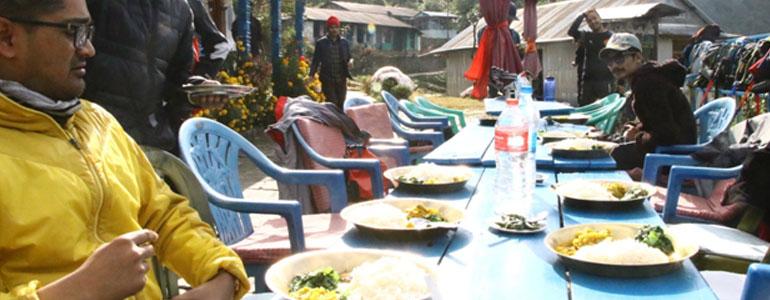Forbes (2016) in its food and agriculture section states about the new trends in culinary arts that next year (2017) promises to be one of the most exciting in the history of food and retailing as technology takes a bigger role in food production, retail environments and consumer communication, and as a new administration in Washington promises to make significant changes to the agencies that will have a direct impact on food production and policies. Food has become so trendy that the customers would like to taste the new food every day as to how they want to wear new clothes every day. The role of creative chefs is an important part of making the friendlier and contemporary. Following are some of the important new trends in the Global Food and Beverage Sector as observed by Daniel J. Edelman (2017)
Flavoured water: In the latest example of the trickle-down effect, consumers are demanding more of our most basic beverage – water – and beverage companies are delivering. Plant waters like aloe, maple, artichoke and cactus make even coconut water look old school. The global flavoured and functional water market is expected to reach an estimated value of US$36.7 billion in 2019. Not only are bottled water sales up but with plenty of flavour, fizz and functionality, there’s no need to choose between hype and hydration.
Under the sea: This year’s alternative protein is one that Asian markets have been cultivating for nearly 500 years. Scrumptious snacks and daring dishes featuring plant-based foods like seaweed, duckweed and algae could also provide solutions for problems like sustainability and food security. Requiring no land, fertilizers or freshwater, and packed with high levels of iodine, Omega 3s, vitamins and protein, many believe our seas could provide solutions for issues surrounding sustainability and food security.
All halal: Worldwide revenue generated by halal-certified food and beverage companies stood at US$415 billion last year. As populations shift, halal is projected to grow to US$1.6 trillion by 2018, representing almost 17 per cent of the global food and beverage spend. Halal popularity occupies an expanding niche in new markets, such as Asia and North America. While some view halal as an assurance of religious adherence, food quality or ethical treatment of animals, others see it as the next adventurous food trend to try.
E-commerce revolution: The rise of e-commerce sites like Alibaba and WeChat in Asia have led to a new business segment for multinational food and beverage companies seeking to drive sales in the dynamic marketplace. Nestlé* has said that its e-commerce sales in China are more profitable on average than sales through brick-and-mortar retail chains.
Cheers to our wellness: The trend towards health and wellness has resulted in increased interest in functional drinks with added ingredients that amp up the way consumers look and feel. If vinegar-based drinks aren’t your cup of tea, try turmeric elixir, charcoal juice or even algae water.
War against waste: Until recently, food waste was a social and political cause with discussions limited to high-level influencers. Growing consumer awareness and continued concern about how food impacts the environment has moved the food waste discussion firmly into the mainstream, and now food and beverage companies are feeling the pressure to engage on the issue. This means tackling food waste is now much more than just wishful thinking – it’s a wise business move, and the imperative is not just to educate consumers, but also to innovate and bring forward solutions.
Culinary cannabis: The legalization of marijuana in areas of the United States has led to a proliferation of plant-to-table cuisine that has already existed in places like the Netherlands. Now, chefs, mixologists and confectioners worldwide are all getting in on cannabis. Don’t think of this trend solely as stoner staples, though, because when cannabis appears in a high-end dish or drink, it’s usually infused and intended for flavour, aroma and sometimes a bit of theatre.
Wipe the label clean: The growing need for transparency and authenticity in the food and beverage space has sparked a slew of clean labelling efforts in developed markets to ensure consumers that their food comes from recognizable ingredients. Now, the pressure to reduce the use of artificial ingredients and increased legislative regulation around labelling is putting expectations on brands worldwide. And for companies that comply, it’s a way to gain – and in some cases regain – coveted consumer trust.
Ambitious agriculture: With a shrewder eye to agriculture’s impact on the environment, the diminishing amount of arable land and the population shifts to urban areas, new methods of farming are positioned to support sustainability in inventive ways, such as aquaponics and vertical farms, which are sprouting up in every region of the world. By 2050, about 80% of the world’s population will be living in urban centres. Vertical farming alone can allow anyone to have locally-sourced foods alongside a penthouse view of their neighbours’ farms.
Everything’s edible: The future of eco-friendly has been right in front of us all along, but we’ve been putting it in the trash bin. Now we’re entering an era where everything is edible, including the wrapping. Biodegradable, edible food packaging could have a positive impact on everything from pollution to human nutrition, so expect it to gain traction in more of the mainstream food and beverage discussions in Coffee culture unfiltered:
Coffee has become central to our globally connected beverage culture. As part of the interconnectedness, premiumization is hitting every segment of the market – from small speciality roasters to mass instant producers. In fact, while speciality coffee shops have expanded coffee culture into traditional tea-drinking markets like China, Iran and the UK, instant coffee is providing a quick shot of western culture in the Asia Pacific, the Middle East and Africa. Good coffee is now treated with the same reverence as fine wine, with the barista serving as a sommelier.
Automation in à la Carte: Tech innovations like robots, auto bots and artificial intelligence alleviate labour force scarcity, amp up efficiency and can be more cost-effective for food and beverage manufacturers, and even restaurants. But will people embrace technology, proceed with caution or outright reject it? And how will the culinary world react?
Hero foods: Have you heard of hero foods? Superfoods are still super popular, but hero foods are now having their moment. They’re the ones that have been there all along – the ones that maybe weren’t the most popular, but sure were brainy. For instance, who won the 2016 World Food Prize? The developers of the orange-fleshed sweet potato, the most successful example of micronutrient and vitamin bio-fortification. Now let us introduce you to foods like lentils, chickpeas, turnips, carrots and rutabagas. They’re the foods we’ve been eating all along and they pack a nutritious punch.











01 Comment
david
The primary reason for Food Packaging Boxes is to make sure the food retains . Some of the secondary purposes of packaging involve traceability, convenience and tamper resistance. If not provided the right packaging.<a href="https://pinpackaging.com/food--packaging-boxes/">food packaging boxes</a> Food Packaging Boxes are the solution to your Food Packaging needs. They come in lashes and sizes. An item of such high reputation and relish deserves to be packaged in a packaging item that does justice to its high stature and position.